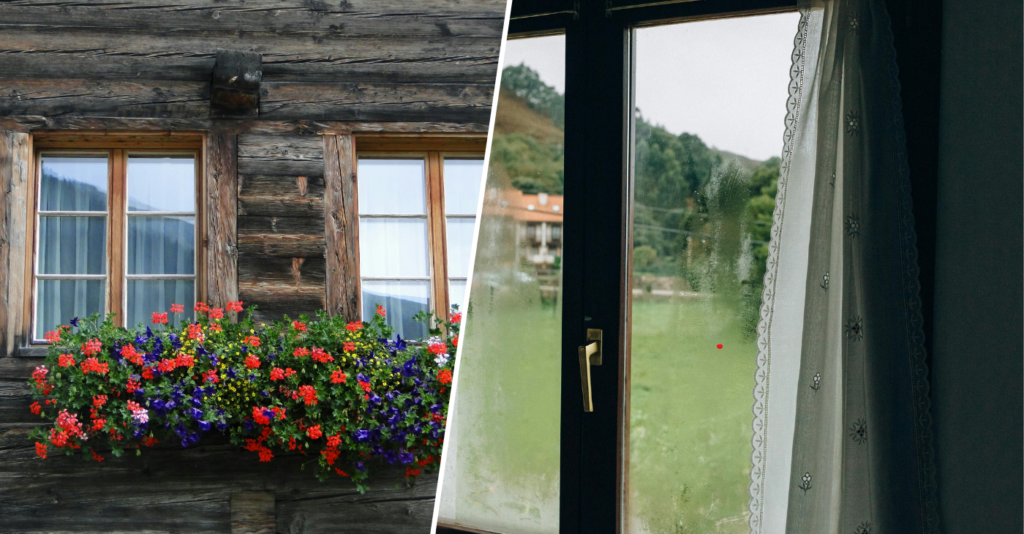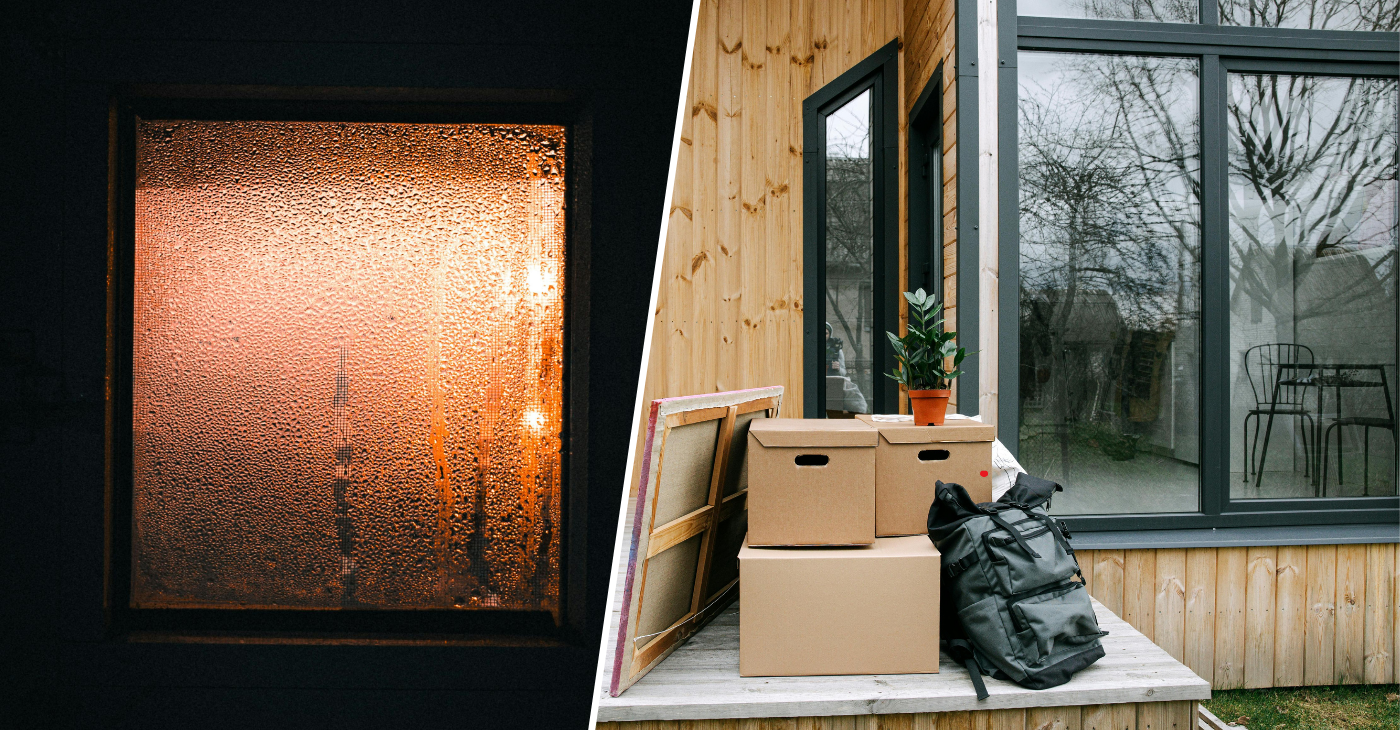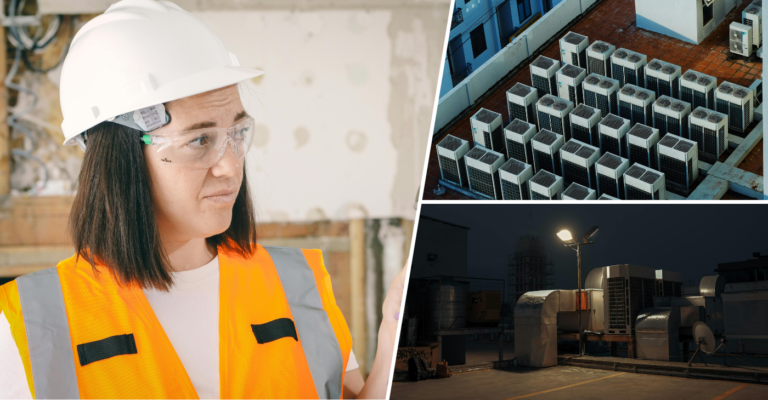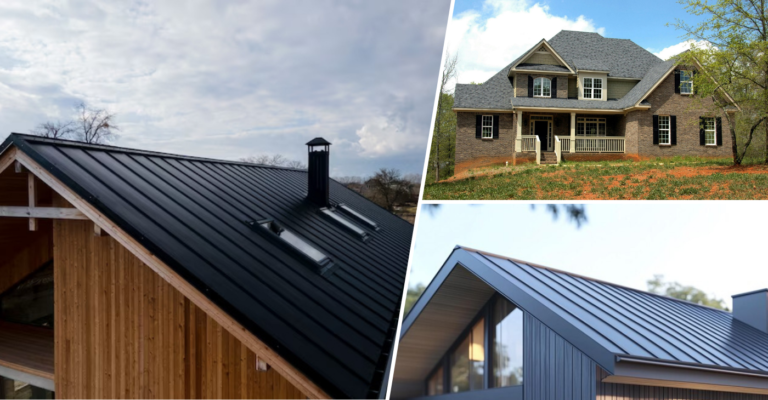Guide: How to get rid of condensation in double glazed windows?
Condensation in double glazed windows is a common issue many homeowners face. It happens when warm, moist indoor air hits a cooler glass surface, causing water droplets to form. Some condensation is harmless, but certain types can signal issues that reduce window performance and energy efficiency. This blog covers the main causes of condensation, the different types, and ways to prevent or fix it. Knowing how to handle condensation helps keep windows clear, lowers energy bills, and makes your home more comfortable.
What causes condensation in double glazing?
Condensation on double glazing is common and often points to insulation issues. It forms when warm, moist air meets a cold surface, creating droplets. Here are the main causes:
Seal failure
Double glazing units rely on a tight seal around the panes. This seal keeps out moisture and maintains the insulating gas between the glass. Over time, seals can weaken due to sunlight, age, or temperature changes. When this happens, moisture gets into the space between the panes, causing condensation. This not only reduces visibility but also impacts energy efficiency.
High indoor humidity
Everyday activities like cooking, showering, and even drying clothes add moisture to indoor air. When this humid air meets the cooler window surface, condensation forms. Poor ventilation can make this worse, especially in winter when windows stay closed. High humidity without proper airflow can quickly lead to visible condensation in double glazed windows.
Temperature differences
Condensation often forms when there’s a big temperature gap between indoors and outdoors. In winter, warm air inside meets cold double-glazed panes, leading to condensation on the inner glass surface. This is common in older windows with less effective insulation. North-facing windows or shaded areas are also more prone to this issue since they remain cooler.
Types of condensation: Inside, outside, and between panes
When it comes to double glazing, condensation can tell a lot about window performance and moisture control in a building. Let’s break down the types of condensation and what they mean:
Internal condensation
This appears on the inner pane, facing indoors, and is often caused by high indoor humidity. When warm, moist air meets the cooler glass, condensation forms. This type of condensation usually indicates poor ventilation or a lack of airflow, especially in rooms with high humidity like kitchens and bathrooms. If left unchecked, internal condensation can lead to mould, frame damage, and wear on finishes around the window.
External condensation
When condensation forms on the outer pane, it’s generally harmless. This type shows that the window’s insulation is working, keeping warmth inside and the outer glass cool. You’ll often see external condensation in the early morning or on cool days. This kind of condensation doesn’t harm the window; in fact, it’s a sign the double glazing is effectively blocking heat transfer.
Inter-pane condensation
Condensation between the panes is usually a red flag. It means the seal around the double glazing has failed, allowing moisture to get trapped inside. This area is supposed to be sealed with an insulating gas, so moisture in the gap weakens the window’s thermal performance. If you see inter-pane condensation, it typically means the window will need professional repair or replacement to restore insulation.
Is condensation in double glazed windows a sign of a problem?
Not all condensation is a problem, but where it forms and how often can point to different issues:
- External condensation: This is a good sign that the double glazing is effectively insulating your home. It usually doesn’t need any action.
- Internal condensation: Persistent internal condensation shows high humidity inside. This can damage window frames and surrounding areas over time. Increasing ventilation or using a dehumidifier can help reduce it.
- Inter-pane condensation: This is a clear sign of seal failure. It reduces the window’s efficiency and can’t be fixed by managing indoor humidity alone. Typically, you’ll need to replace the affected unit to restore full insulation.
Can you prevent condensation in double glazed windows?
Preventing condensation in double glazed windows involves managing indoor air quality, moisture levels, and temperature consistency. Double glazed windows are designed to prevent heat loss, but condensation can reduce their effectiveness. Here’s how you can keep condensation under control:
Improve ventilation
Good ventilation is key to reducing moisture indoors. Use extractor fans in areas like kitchens and bathrooms to remove steam and humid air. If possible, install trickle vents on windows to allow steady airflow without major heat loss. For homes with modern systems, mechanical ventilation with heat recovery (MVHR) is an efficient way to balance fresh air with heat retention.
Reduce indoor humidity
High humidity levels are a main cause of condensation. Use dehumidifiers, especially in rooms with a lot of moisture, like laundry areas. Simple habits like covering pots when cooking and avoiding drying clothes indoors also help keep indoor humidity lower. Ideally, aim for a relative humidity of 30-50% to reduce condensation risks on your windows.
Maintain consistent indoor temperatures
Keeping a stable indoor temperature prevents cold spots that can cause condensation. In colder months, make sure the room is consistently heated to avoid big temperature differences around the window. Thermally insulated frames, thermal curtains, or programmable thermostats can help maintain even temperatures and reduce condensation.
How to fix condensation inside double glazed windows?

Fixing condensation in double-glazed windows depends on where it appears. Here’s how to handle both internal and inter-pane condensation:
For internal condensation
Increase ventilation –Improving airflow helps reduce indoor moisture. Open windows often to let humid air escape. Use extractor fans in bathrooms and kitchens to stop humidity from building up. Adding trickle vents to windows allows airflow without losing too much heat.
Use dehumidifiers – Dehumidifiers help control indoor humidity. Aim for a level between 30-50% to prevent window condensation. Portable dehumidifiers work well in smaller rooms, while whole-house units suit larger spaces. Lowering humidity also protects window frames from mold and damage.
For inter-pane condensation
Professional repair or replacement – Condensation between panes shows the window seal has failed. This lets moisture into the space between the glass. Usually, the best fix is to replace the glass unit, restoring insulation and efficiency. Some specialists offer resealing, but this may only be a temporary fix.
Professional vs. DIY fixes for double glazing condensation
When dealing with condensation in double glazed window, it’s essential to consider whether DIY or professional solutions are more suitable. Here’s a breakdown of each approach:
DIY fixes
Simple techniques can help manage condensation in double glazing without immediate professional intervention.
Temporary solutions for condensation in double glazing:
- Use a dehumidifier: Place a dehumidifier near the window to reduce indoor humidity and minimise condensation. This is especially useful in rooms with high moisture, like bathrooms and kitchens.
- Improve ventilation: Increase airflow by opening windows or using exhaust fans. This helps disperse moisture-laden air, reducing condensation on the glass.
- Apply a moisture absorbent: Use materials like silica gel packets or calcium chloride near the window to absorb extra moisture in the air.
- Use a hair dryer: Gently heat the window with a hair dryer to evaporate trapped moisture. This provides a temporary visual improvement but doesn’t fix the issue.
- Install secondary glazing film: Applying a secondary glazing film adds a barrier that reduces heat loss and minimises condensation. It’s an affordable and easy option.
Limitations
DIY fixes won’t resolve deeper issues like broken seals. If the seal has failed or there’s moisture between the panes, DIY solutions are unlikely to help long-term. They may reduce condensation temporarily but won’t restore the window’s installation or energy efficiency.
Professional fixes
Expert services offer lasting solutions by addressing the root causes of condensation in secondary glazing.
Comprehensive solutions
Professional repairs offer more permanent results. A specialist can assess the condition of the window and provide a solution, whether it’s resealing or replacing the unit. Resealing restores the seal’s integrity, while replacing the glass unit completely renews insulation.
Long-term benefits
Professional fixes ensure better insulation and can lead to lower energy bills. Fixing or replacing the glazing extends its lifespan, keeps visibility clear, and maintains energy efficiency for years to come.
When should you consider replacing your double glazing?
Replacement may be needed if:
- Persistent inter-pane condensation
Ongoing condensation between the panes is a sign of seal failure. This impacts insulation, making the window less effective. - Physical damage
Cracks, warping, or damage to the frames weaken the window’s structure. In such cases, replacement is usually the best option. - Reduced energy efficiency
If your energy bills are rising, it could be due to a loss of insulation in the windows. A replacement restores thermal performance and helps reduce heating and cooling costs.
How long does a fix last for condensation issues?
The lifespan and cost of condensation fixes for double glazing depend on the method used and the extent of the issue. Here’s a simple breakdown:
Temporary fixes – DIY fixes like moisture absorbers or anti-condensation sprays are short-term solutions. They may help reduce surface condensation, but they usually last only a few months. Since these do not address the core issue, they are best for minor cases and not for condensation between the panes.
Professional repairs – Professional repairs, such as resealing or replacing the glass unit, are longer-lasting solutions. A properly done reseal by a professional can improve insulation and keep condensation away for several years. The longevity depends on the quality of materials used and the expertise of the installer.

Costs for fixing double glazing condensation:
When condensation forms inside double-glazed windows, it usually means the seal has failed. This lets moisture seep between the panes, impacting insulation and appearance.
Repair options
Homeowners generally have two options:
- Defogging repair: This method removes moisture and reseals the unit. It’s a quick, affordable fix but may not fully restore insulation.
- Glass replacement: Replacing the entire glass unit provides a long-term solution. It restores insulation but costs more than a defogging repair.
Cost factors
Costs vary based on:
- Window size and type: Larger or custom-shaped windows are more expensive.
- Glass type: Adding features like low-E coatings increases costs.
- Labor rates: Prices depend on regional labor charges and job complexity.
- Extra repairs: Damaged frames may require additional repairs, raising costs.
Estimated costs
Typical costs for fixing condensation in double glazed windows:
- Single Pane Replacement:
- Small (200mm x 400mm): £55
- Medium (500mm x 700mm): £74
- Large (800mm x 1000mm): £117
- Extra Large (900mm x 1200mm): £145
- Whole Window Replacement:
- Small Window: Around £150
- Standard Window: Around £270
- Large Window: Around £600
Tips for choosing the right professional for double glazing repair
Choosing a reliable professional for double glazing repair is essential to ensure quality results. Here are key tips:
Check credentials
Verify that the contractor has relevant certifications and experience in double glazing repairs. Certified professionals are more likely to understand advanced techniques and provide durable repairs.
Read reviews
Look at customer feedback to gauge the contractor’s reliability and service quality. Reviews can reveal insights into their punctuality, quality of work, and follow-up support.
Get multiple quotes
Request quotes from several contractors to compare pricing and services. Detailed quotes help you understand what each includes, from materials to warranty terms, so you can make an informed choice.
Does double glazing improve energy efficiency after repairs?
Repairing or replacing faulty double glazing can greatly enhance energy efficiency.
Reduce heat loss
Well-maintained double glazing improves insulation, reducing heat transfer and lowering energy bills. Fixing damaged seals or replacing a failed unit restores the window’s thermal performance.
Improve comfort
Proper repairs help maintain a consistent indoor temperature by preventing drafts and minimising temperature fluctuations. With improved insulation, double glazing also reduces external noise, creating a more comfortable and stable environment.
Conclusion
Preventing condensation in double glazed windows is key to keeping windows effective and looking good. Simple steps, like ensuring good seals and managing humidity, can make a big difference. Persistent condensation, especially between panes, usually needs professional repair or replacement. Regular maintenance on double glazing boosts energy efficiency, comfort, and durability. By addressing condensation issues early, homeowners can keep their windows clear and efficient for years.







